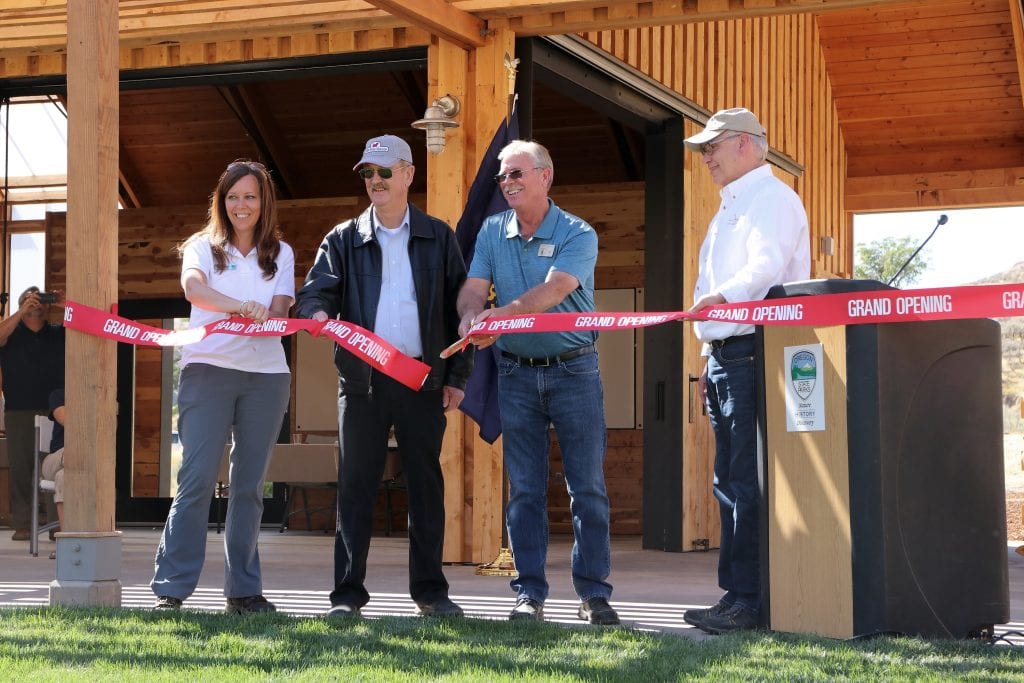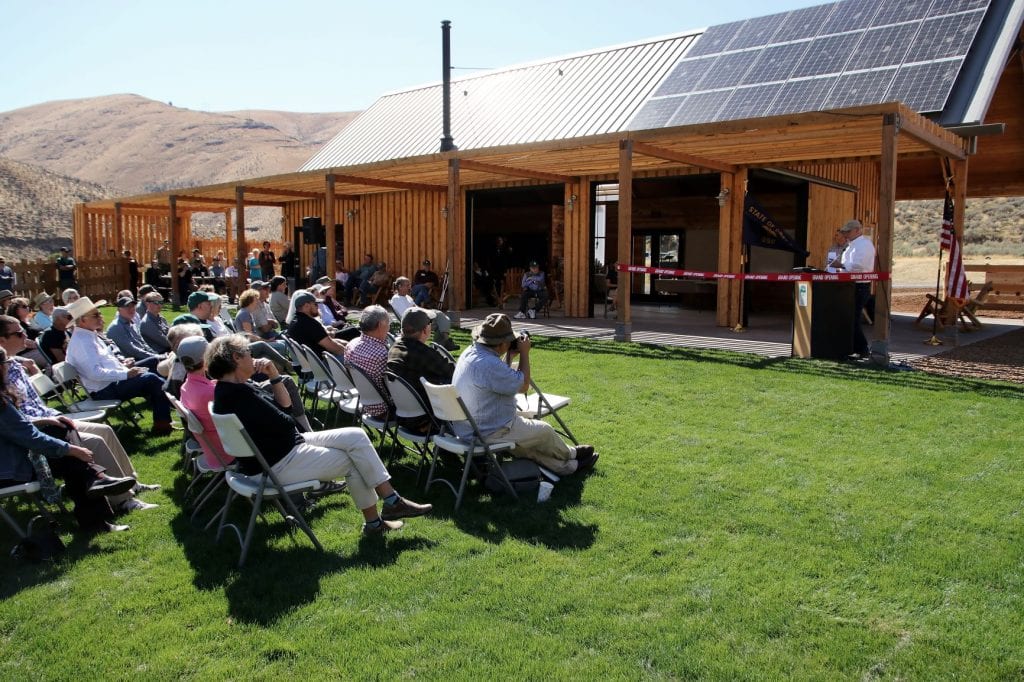Central Oregon
Major Successes
Tumalo State Park
In 2004 Oregon Parks and Recreation Department (OPRD) launched an ambitious effort to develop model sustainable park practices that can be monitored, evaluated and replicated in other state parks. These sustainable practices include efforts to reduce waste, eliminate hazardous substances, achieve climate neutrality, enhance ecosystem function and share information with all stakeholders. This endeavor allowed Oregon Parks and Recreation Department to test sustainable practices in both new and more established parks in terms of start-up cost, maintenance expenses, reduction of resource use and cost savings as well as effectiveness of learning by the public.
Two state parks in Central Oregon – Tumalo State Park and Pilot Butte State Scenic Viewpoint – were selected as test sites. Oregon State Parks Foundation spearheaded the “Sustainable Parks” campaign, which raised $155,000 for the following projects that promote sustainability:
- Upgrade an irrigation system for water conservation
- Implement comprehensive recycling programs
- Install solar efficient upgrades (e.g. meeting hall, yurts, picnic shelter)
- Purchase an electric vehicle for park maintenance operations
- Build interpretive exhibits and programs in both parks
Tumalo State Park is located 5 miles northwest of Bend and includes camping sites, yurts, picnic areas and day use. The 320-acre park was a national demonstration site for solar showers in the 1970’s. Today visitors come from miles away to enjoy the beautiful Deschutes River that flows through the park.
Pilot Butte State Scenic Viewpoint
In 2004 Oregon Parks and Recreation Department (OPRD) launched an ambitious effort to develop model sustainable park practices that can be monitored, evaluated and replicated in other state parks. These sustainable practices include efforts to reduce waste, eliminate hazardous substances, achieve climate neutrality, enhance ecosystem function and share information with all stakeholders. This endeavor allowed Oregon Parks and Recreation Department to test sustainable practices in both new and more established parks in terms of start-up cost, maintenance expenses, reduction of resource use and cost savings as well as effectiveness of learning by the public.
Two state parks in Central Oregon – Tumalo State Park and Pilot Butte State Scenic Viewpoint – were selected as test sites. Oregon State Parks Foundation spearheaded the “Sustainable Parks” campaign, which raised $155,000 for the following projects that promote sustainability:
- Upgrade an irrigation system for water conservation
- Implement comprehensive recycling programs
- Install solar efficient upgrades (e.g. meeting hall, yurts, picnic shelter)
- Purchase an electric vehicle for park maintenance operations
- Build interpretive exhibits and programs in both parks
Pilot Butte State Scenic Viewpoint showcases a panoramic view of the Cascade Mountain peaks and the surrounding high desert from the summit of an old cinder cone. Its trail system connects with a regional trail. In the early years, the site provided a great service to adventurers as a guiding landmark. Today locals and visitors flock to the park for exceptional hiking opportunities and truly picturesque views.
Smith Rock State Park
In 1997 Oregon State Parks Foundation helped raise $110,000 to purchase 5 acres to expand the park site, develop interpretive signs, install drinking fountains and improve the trail system to minimize the effects of the foot traffic on the delicate soil structure and native vegetation.
Smith Rock State Park protects a sanctuary of majestic rock spires that rise above the Crooked River in Central Oregon’s high desert. It is an internationally renowned destination for rock climbing.
Fort Rock State Cave
Oregon State Parks Foundation raised the funds to purchase this special place so it will be preserved for future generations. Now, the goal is to link the cave to surrounding Fort Rock Cave so it is more accessible to visitors.
Cottonwood Canyon
Cottonwood Canyon Experience Center
In September 2018, Cottonwood Canyon State Park hosted the grand opening celebration for a 1,500-square foot Experience Center that will serve as a classroom for outdoor education and a reservable event space. The $2.5 million project also includes four cabins and a new restroom facility with showers.
The cabins are completed and ready to reserve at oregonstateparks.org. The Experience Center is open for reservations by clicking here, with priority given to educational and nonprofit groups. The center includes an indoor meeting room with capacity for 69 people and an outdoor kitchen and lawn area with space for outdoor seating.
The Experience Center was designed in part to support Eastern Oregon University’s Cottonwood Crossing Summer Institute, a week-long residential field study course for high school students held each June. It was largely built thanks to our generous donors, which contributed $600,000 in money and donated products.
Located 50 miles southeast of The Dalles, Cottonwood Canyon’s 8,000 acres straddle the John Day River. Oregon’s second largest park features a small, year-round primitive campground on the banks of the river, as well as trails for hiking, mountain biking and horseback riding. The park is also known for its fishing and access to hunting outside the developed park area.
Cottonwood Crossing Summer Institute
The Foundation worked closely with the Oregon State Parks Department, the Department of Environmental Quality, the Bureau of Land Management and Eastern Oregon University to incubate a summer program for high school students at Cottonwood Canyon State Park. After five years, EOU has now taken over management of the program and Oregon Parks Forever is now in the role of fundraiser for scholarships and funding the solar energy education program.



